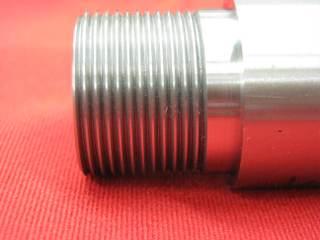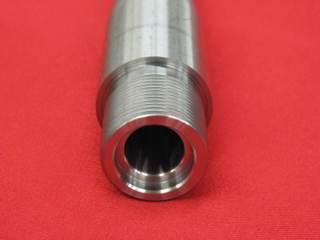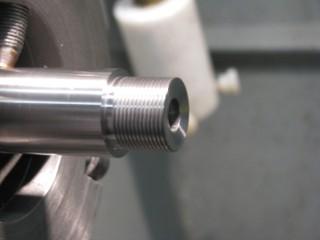LRSickle
Well-Known Member
I have an old Tida 1236G (12x36 gap bed) that I use for my chambering. It's still a tight machine.
I have a couple questions.
I practice final/spring passes on different materials to see how smooth I can get them. When I get a nice finish, I write down my speed/feed and put in in the case with the tool I just used. Do any of you know of a site that has speed/feed, surface inch per second and similar info that I can print out and hang on the wall in front of my lathe? I've found a bunch of speed calculators on the internet but I need something I can print out.
I also need recommendations on a threading tool that I can get close to a tennon shoulder without hitting it. I use a threading tool from Grizzly and I only have a micro second to open my halfnuts and spin my crossfeed out before it hits the shoulder. I took a 3/8 square HSS blank and ground a tool like one I saw on the net. It works but I'm not good at grinding my own tools that's for sure. So what threading tools/inserts are you guys using that work good for threading up close to a shoulder?
I have a couple questions.
I practice final/spring passes on different materials to see how smooth I can get them. When I get a nice finish, I write down my speed/feed and put in in the case with the tool I just used. Do any of you know of a site that has speed/feed, surface inch per second and similar info that I can print out and hang on the wall in front of my lathe? I've found a bunch of speed calculators on the internet but I need something I can print out.
I also need recommendations on a threading tool that I can get close to a tennon shoulder without hitting it. I use a threading tool from Grizzly and I only have a micro second to open my halfnuts and spin my crossfeed out before it hits the shoulder. I took a 3/8 square HSS blank and ground a tool like one I saw on the net. It works but I'm not good at grinding my own tools that's for sure. So what threading tools/inserts are you guys using that work good for threading up close to a shoulder?



